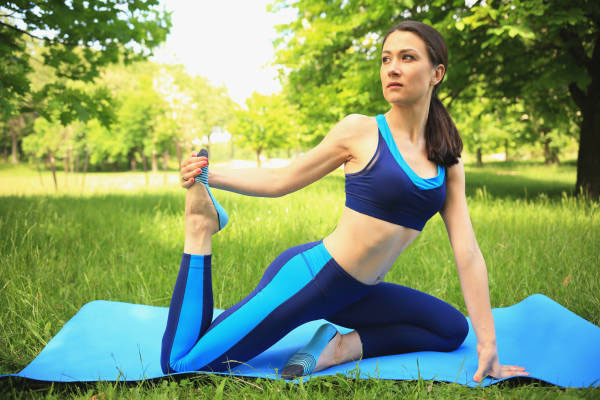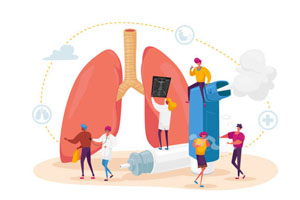Discover the best techniques for enhancing flexibility without the risk of injury Our guide provides safe and effective strategies to improve your flexibility for sports and exercise Learn how to stretch, avoid common mistakes, and optimize your performance
Understanding Flexibility and Its Importance
1. What Is Flexibility?
Flexibility refers to the stretchability and mobility of muscles and joints in the body. It determines the range and freedom of movement in our bodies. When muscles and joints can stretch and return to their normal position, the body becomes more flexible.
2. Why Is Flexibility Important?
Enhanced Performance: Flexibility can improve athletic and sports performance by enabling athletes to perform a wide range of movements more easily. Injury Prevention: Proper flexibility can reduce the risk of exercise-related injuries. When muscles and joints are flexible, they are better able to absorb impact. Posture and Alignment: Good flexibility helps maintain proper posture and body alignment, reducing the risk of discomfort and poor posture.
3. Types of Flexibility
Dynamic Flexibility: Range of motion in muscles and joints during movement, such as running and jumping. Static Flexibility: Maintaining stretched positions, as seen in yoga poses. Active Flexibility: Controllable range of muscles by oneself. Passive Flexibility: Range of joints and muscles when an external force is applied.
4. Assessing Flexibility
Understanding your initial flexibility level is crucial. Certain tests and assessment methods can help determine your flexibility, allowing you to create an effective exercise plan.

Benefits of Improved Flexibility for Sports and Exercise
1. Enhanced Athletic Performance
Greater Range of Motion: Increased flexibility allows athletes to perform a wider range of movements, essential for sports like gymnastics, dance, and martial arts. Improved Agility: Flexible muscles and joints enable quicker changes in direction and agility during sports like soccer or basketball. Reduced Risk of Injury: Improved flexibility can help prevent muscle strains and tears, common in high-impact sports.
2. Better Muscle Recovery
Reduced Muscle Soreness: Flexible muscles recover faster and are less prone to post-exercise soreness. Improved Blood Circulation: Enhanced flexibility promotes better blood flow, which aids in the removal of waste products and toxins from muscles.
3. Postural Benefits
Improved Posture: Flexible muscles and joints contribute to maintaining proper posture, reducing the risk of poor alignment issues. Back Pain Relief: Better flexibility can alleviate lower back pain and discomfort by reducing muscle tension.
4. Injury Prevention
Reduced Risk of Sprains and Strains: Flexibility helps prevent common sports injuries, such as ankle sprains and muscle strains. Enhanced Joint Health: Improved joint flexibility can protect against conditions like osteoarthritis.
5. Increased Relaxation and Stress Reduction
Flexibility exercises often promote relaxation and stress reduction, which can positively impact mental health and overall well-being.
Factors Affecting Flexibility
1. Age
Natural Age-Related Changes: Flexibility tends to decrease with age due to changes in muscle elasticity and collagen production. Importance of Early Flexibility Training: Encouraging flexibility exercises from a young age can slow the decline in flexibility over time.
2. Physical Activity Level
Frequent Exercise: Regular physical activity can maintain or improve flexibility by preventing muscle and joint tightness. Sedentary Lifestyle: Lack of physical activity can lead to reduced flexibility due to muscle disuse.
3. Gender
Gender Differences: In general, women tend to be naturally more flexible than men. This can be attributed to hormonal differences. Individual Variations: Flexibility levels can vary widely among individuals of the same gender.
4. Genetics
Genetic Predisposition: Genetics play a role in an individual's baseline flexibility. Genetic Potential: While genetics set the baseline, flexibility can still be improved through training and lifestyle modifications.
5. Previous Injuries
Scar Tissue Formation: Past injuries, if not properly rehabilitated, can lead to scar tissue formation and reduced flexibility. Importance of Rehabilitation: Proper rehabilitation after injuries is crucial for maintaining or regaining flexibility.
6. Temperature and Warm-Up
Effect of Temperature: Muscles tend to be more flexible when they are warm, so stretching in a warm environment can be more effective. Importance of Warm-Up: Performing a warm-up routine before stretching helps prepare the muscles for flexibility exercises.
Effective Techniques for Improving Flexibility
1. Warm-Up and Stretching
Importance of Warm-Up: Begin your flexibility routine with a warm-up to increase blood flow and muscle temperature. Dynamic Warm-Up: Dynamic movements like leg swings or arm circles prepare your muscles for stretching. Duration: Spend 5-10 minutes on warm-up exercises before proceeding to stretching.
2. Incorporating Dynamic Stretches
Dynamic Stretching: Dynamic stretches involve controlled movements, such as lunges or high knees. Benefits: They improve flexibility while activating and engaging the muscles. Example Movements: Leg swings, arm circles, and body twists.
3. Static Stretching Techniques
Static Stretching: These stretches involve holding a position for a specific duration without movement. Key Muscles: Focus on major muscle groups like hamstrings, quadriceps, calves, and shoulders. Hold and Breathe: Hold each stretch for 15-30 seconds, breathing deeply and gently increasing the stretch.
4. Yoga and Pilates for Flexibility
Yoga: Yoga incorporates poses that enhance flexibility, balance, and body awareness. Pilates: Pilates strengthens core muscles while promoting flexibility. Classes and Online Resources: Consider joining classes or using online resources to guide your practice.
5. Foam Rolling and Self-Myofascial Release
Foam Rolling: Foam rollers help release muscle knots and improve flexibility. Self-Myofascial Release: Techniques like rolling a tennis ball over tight spots can be effective. Benefits: These methods can alleviate muscle tension.
6. Gradual Progression and Consistency
Slow Progression: Avoid overstretching; progress gradually in intensity and duration. Consistency: Consistent stretching sessions are essential for long-term flexibility improvements. Listen to Your Body: Pay attention to your body's response and adjust your routine accordingly.
Common Mistakes to Avoid
1. Skipping Warm-Up and Cool-Down
Mistake: Neglecting a proper warm-up and cool-down routine. Importance: Warm-up prepares muscles, and cool-down aids in recovery. Solution: Allocate time for both warm-up and cool-down exercises.
2. Overstretching
Mistake: Pushing your body too hard, leading to overstretching. Risk: Overstretching can cause muscle strains and injuries. Solution: Stretch within your comfort zone, and avoid forcing your body into positions.
3. Bouncing During Stretches
Mistake: Using bouncing or ballistic movements during stretches. Risk: This can strain muscles and lead to injuries. Solution: Perform static stretches and hold positions.
4. Ignoring Pain Signals
Mistake: Ignoring pain or discomfort during stretching. Risk: Ignoring pain can lead to injury or overstretching. Solution: Stretch to a point of tension, not pain, and listen to your body.
5. Not Staying Consistent
Mistake: Inconsistent stretching routines. Importance: Flexibility improvements require regular practice. Solution: Establish a consistent schedule and stick to it.
FAQs about Increasing Flexibility Safely
Q1: Is it necessary to warm up before stretching for flexibility?
A: Yes, warming up is essential to prepare your muscles and prevent injuries. Engage in light aerobic activities or dynamic stretches to increase blood flow to your muscles.
Q2: How often should I stretch to improve flexibility?
A: Aim for at least 3-5 days a week. Consistency is key to seeing improvements in your flexibility. However, avoid overstretching or pushing your body too hard.
Q3: Can I improve flexibility through yoga and Pilates?
A: Yes, both yoga and Pilates are excellent practices for increasing flexibility. They combine stretching, balance, and strength, leading to improved flexibility over time.
Q4: What's the difference between static and dynamic stretches?
A: Static stretches involve holding a position, while dynamic stretches involve controlled movements. Both are valuable for flexibility but serve different purposes. Static stretches are best for cool-down and long-term flexibility gains, while dynamic stretches are great for warm-up and functional flexibility.
Q5: How can I prevent overstretching and injuries while working on flexibility?
A: Avoid pushing your body into painful positions or using bouncing movements during stretches. Listen to your body and stretch within your comfort zone. If you experience pain, stop immediately to prevent injuries.








